 If you don't get me out of here I'm a dead woman. The sheets are like sandpaper and the toilet has no seat. 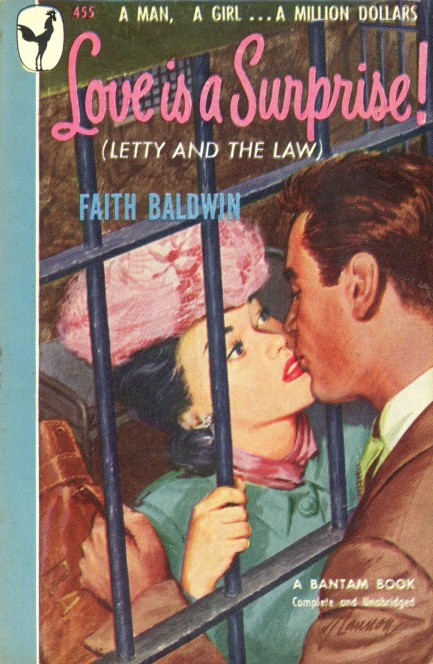
Above is a cover painted by Bert Lannon for the 1948 novel Love Is a Surprise! by Faith Baldwin, a major author of romance flavored fiction who produced around one hundred books in a career than ran six decades, from 1921 to 1977. Lannon is a new illustrator for us. We like his style. The moment he's used for his illustration is also highlighted by editors in the intro page:
She stood in the prison cell, a steel bar in either hand, her face pressed against the metal. He bent his head, and before she could pull away, just managed to kiss her startled lips. “My fee,” he remarked – and went toward the waiting sheriff.
We haven't read Baldwin, but we expect we'll run into something of hers we want to check out eventually. In addition, some of her work was translated to the silver screen, resulting in such films as 1937's Portia on Trial and 1938's Men Are Such Fools. Lannon, conversely, doesn't seem to have been very prolific. There's a little gallery of his work at Flickr, which you can see at this link.
 When is a watershed not a watershed? When the water runs backward. 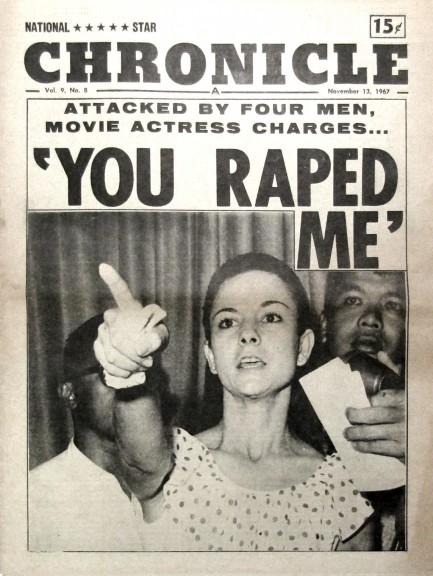
Above is a cover of National Star Chronicle from today in 1967 that references an event from our old HQ the Philippines. At that time the country, which has always had a problem with regressive males who view women as property, was going through a particularly bad stretch of gang rapes. In June of 1967, four men targeted, abducted, and, over the course of more than a day, raped a popular Filipina actress named Magdalena de la Riva. They freed her afterward, probably feeling safe from repercussions. Among the reasons were: they all came from influential families, men all over the country were getting away with similar crimes, and de la Riva probably would have to sacrifice her social standing and career to come forward.
But the quartet—Jaime Gómez José, Basilio Pineda, Edgardo Payumo Aquino, and Rogelio Sevilla Cañal—underestimated de la Riva's courage, and they also misread the mood of the Philippine public. De la Riva did indeed step forward, and the people were overwhelmingly behind her. The four men, as well as three accomplices who helped plan the abduction, were all arrested. After a sensational trial, convictions for all involved, and a few years of legal wrangling, three of the men who committed the actual rape were executed, with the fourth escaping his fate by dying of a drug overdose in prison. The proceedings were broadcast on Philippine national radio in May of 1972.
At the time the case was considered a watershed for women's rights in the Philippines, a sign of progress on the problem. The quotes in National Star Chronicle offer insight into the prevailing sentiment. One police official said, “These young hoodlums will think twice before 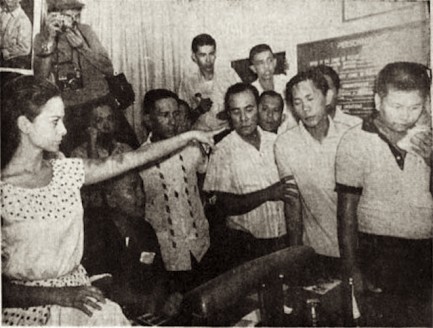 carrying on the way they've been. The public is so enraged now, any would-be rapist knows he stands a chance of being torn limb from limb if he's caught.” But the problem persists all these years later, even despite a ramping up of penalties for the crime. carrying on the way they've been. The public is so enraged now, any would-be rapist knows he stands a chance of being torn limb from limb if he's caught.” But the problem persists all these years later, even despite a ramping up of penalties for the crime.
Recent backward movement on the issue is surely due to the fact that some influential people aren't interested in improving the situation. In 2016, then-presidential candidate Rodrigo Duterte commented about the infamous 1989 rape of Australian missionary Jacqueline Hamill, taken hostage by inmates at Davao Prison, “I was mad she was raped, but she was so beautiful. I thought the mayor should have been first.” Duterte was mayor in 1989, so he was talking about himself. He went on to win the 2016 presidential election, despite his comments. In 2017 he said he would congratulate anyone who raped a Miss Universe, and in 2018 he said Davao City had the highest number of rape cases in the country because there were so many beautiful women there. Needless to say, watersheds are not always what they're cracked up to be—especially in the Philippines.
 I heard you the first time. I'm just choosing to ignore you. 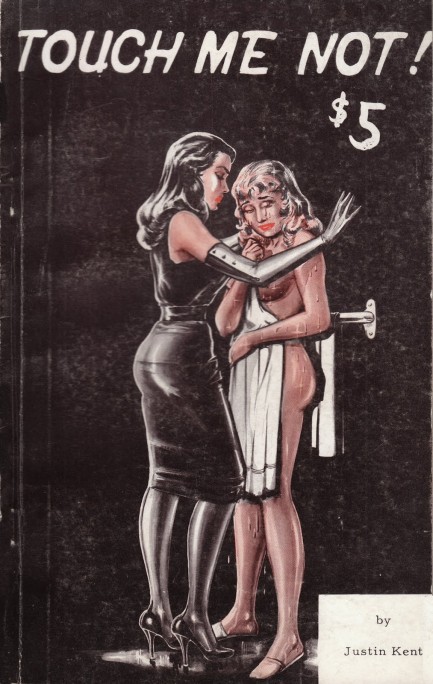
We've been told that this low rent cover for Justin Kent's 1955 fetish cheapie Touch Me Not! is by sleaze art master Eric Stanton. If so, it's a mere sketch compared to his normal style, but we'll accept that it's him. Last time we checked, Touch Me Not! was selling for $155, which is outrageous for something that looks like it was stapled at a Kinko's. But in this case at least, the buyer would get something historically significant. This book was central to an obscenity case brought in 1959 by the state of New York against Times Square bookstore owner Edward Mishkin that after seven years went all the way to the U.S. Supreme Court in 1966. Mishkin lost the case, and Touch Me Not!, which had been confiscated with numerous other books, remained under wraps for fifty years. You can see plenty more Eric Stanton art by clicking his keywords below.
 B-movie actor generates A-list headlines for all the wrong reasons.
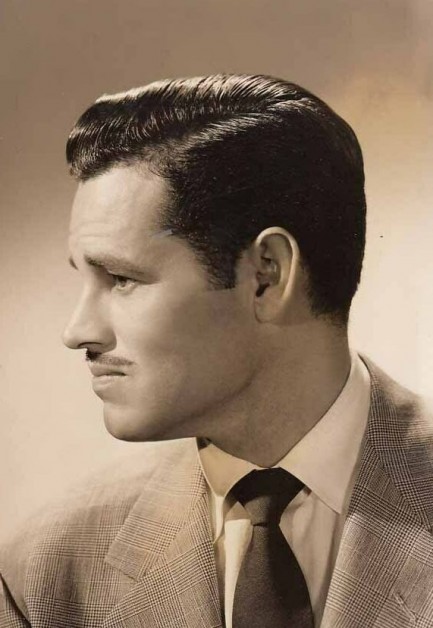 Show business careers go off the rails for a wide array of reasons—lack of talent, lack of audience appeal, substance abuse, and a predilection for general mayhem all come to mind. Hollywood actor Tom Neal fits legendarily into the last category. From his debut in 1938 through 1951 he logged more than seventy film appearances. That's incredible output by any measure. Most of his roles were in b-movies, but there were some notable parts mixed in. His career highlights included Another Thin Man, the film noir Detour, and Crime, Inc. Show business careers go off the rails for a wide array of reasons—lack of talent, lack of audience appeal, substance abuse, and a predilection for general mayhem all come to mind. Hollywood actor Tom Neal fits legendarily into the last category. From his debut in 1938 through 1951 he logged more than seventy film appearances. That's incredible output by any measure. Most of his roles were in b-movies, but there were some notable parts mixed in. His career highlights included Another Thin Man, the film noir Detour, and Crime, Inc.
Neal caused minor scandals early in his career, but he graduated to the majors beginning in early 1951, when he met tempestuous actress Barbara Payton and the two began dating. Payton had announced her engagement the previous year to debonair leading man Franchot Tone, but her ideas about commitment weren't of the standard variety. She was still married to an Air Force Captain named John Payton while dating Tone, and had allegedly slept with Gary Cooper and Steve Cochran while working with them on the 1950 western Dallas. When Neal met her, she kicked Tone to the curb and announced she and Neal would be marrying. But Payton was fickle, to say the least, and ended up dropping Neal and getting re-engaged to Tone. All this while still married to her Air Force guy.
One thing Hollywood people can count on is crossing paths with their colleagues at one point or another—especially if they're dating the same woman. When Neal crossed paths with Tone and Payton in September 1951 at her apartment, he intended to punish the man who had won Payton's hand. Everyone in Hollywood knew Neal had been an amateur boxer. Maybe the qualifier “amateur” gave Tone excessive confidence. Maybe he didn't know that Neal, who you see below with barbells overhead and a tube sock in his shorts, had accumulated a 31-3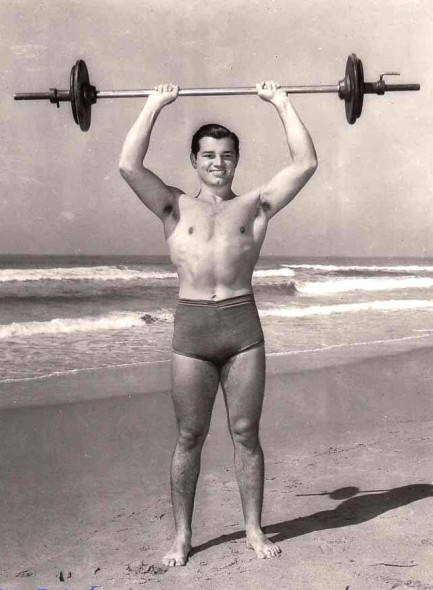 record in the ring. Maybe Tone slipped on a dollop of Beluga caviar. Payton said Tone simply had no choice about fighting because Neal attacked him. Whatever the reason, Neal floored Tone with his first punch, and continued to beat him afterward, delivering cheek and nose fractures. Tone lay in an eighteen hour coma in the hospital. Ironically, that was the day Payton's divorce had come through. record in the ring. Maybe Tone slipped on a dollop of Beluga caviar. Payton said Tone simply had no choice about fighting because Neal attacked him. Whatever the reason, Neal floored Tone with his first punch, and continued to beat him afterward, delivering cheek and nose fractures. Tone lay in an eighteen hour coma in the hospital. Ironically, that was the day Payton's divorce had come through.
1951 had been a pretty good year for Neal up to that point. But from then onward he was Hollywood persona non grata. He'd had more roles in ’51 than he would the entire rest of his career. We wouldn't go so far as saying that means Tone had the last laugh, since it would have been a extraordinarily painful laugh, considering the injuries and cosmetic surgery that followed. But okay, in that karmic way that's never fully satisfying, Tone at least must have felt a bit of Schadenfreude. Neal was blacklisted, and Payton was his. The good times didn't last. He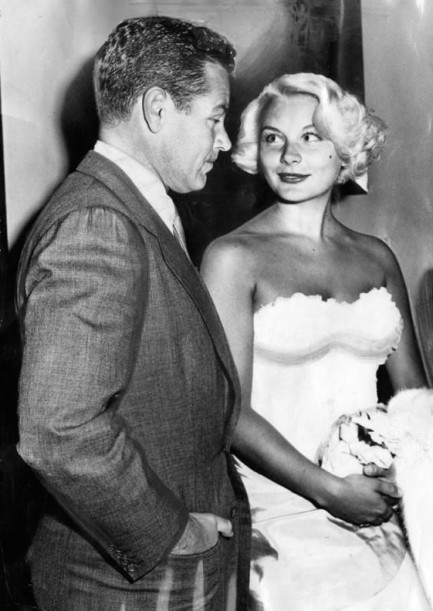 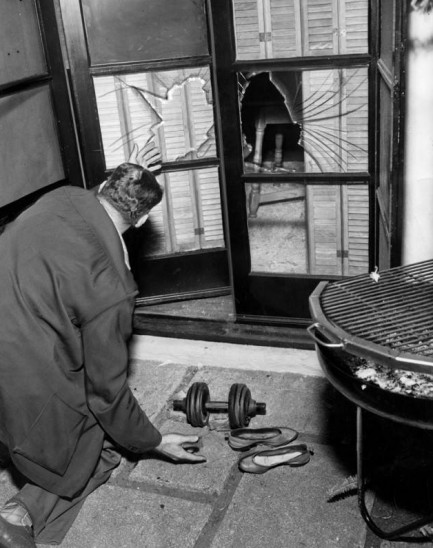 soon discovered that Payton—wait for it—had never stopped seeing Neal, including while Tone was in the hospital with a broken face. So there went that marriage. It seemed as if Neal had unequivocally won Payton's affections after all, and she does look happy in the 1952 photo above, but it's probably no surprise to learn that the two parted ways after a few tumultuous years, some broken windows, and at least one police intervention. Payton went on to have truly epic problems that would put a South American novela to shame. soon discovered that Payton—wait for it—had never stopped seeing Neal, including while Tone was in the hospital with a broken face. So there went that marriage. It seemed as if Neal had unequivocally won Payton's affections after all, and she does look happy in the 1952 photo above, but it's probably no surprise to learn that the two parted ways after a few tumultuous years, some broken windows, and at least one police intervention. Payton went on to have truly epic problems that would put a South American novela to shame.
Neal nursed his severely damaged career along, landing only occasional minor parts, and by the time the ’60s rolled around couldn't beg, barter, or buy a role. He had been married for a few years during the late ’50s, and in 1960 he married again, to a receptionist named Gale (sometimes Gail) Bennett, who you see below. In April 1965 police were summoned to Neal's home in Palm Springs where they found Bennett dead. She had been shot through the back of the head with .45 calibre pistol, the 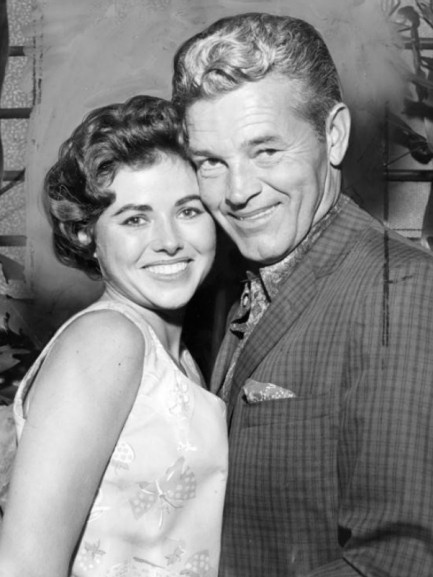 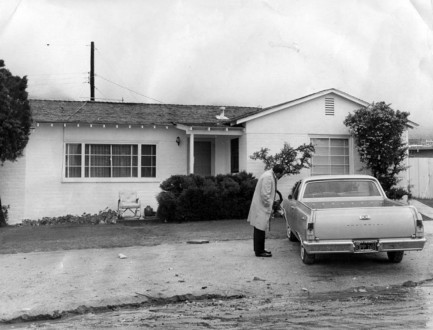 slug entering her skull behind her right ear and ending up in a sofa cushion. Neal wasn't on the premises when police arrived, but was soon arrested, and claimed the shooting had been an accident, the result of a struggle over the gun after his wife pulled it on him. slug entering her skull behind her right ear and ending up in a sofa cushion. Neal wasn't on the premises when police arrived, but was soon arrested, and claimed the shooting had been an accident, the result of a struggle over the gun after his wife pulled it on him.
Accounts of the killing vary, as they always do. In some, Neal shot Bennett as she was taking a nap. In others, they argued. We even found one that said Neal claimed the accident occurred while he and Bennett were making love. At trial Neal's defense attorney claimed a mystery man had pulled the trigger. We were struck, however, when we found that Bennett had secretly filed for divorce, and in the filing specifically mentioned Neal threatening her with a .45 automatic. If that detail struck us, it certainly must have made an impact on the jury. In the end, after a sensational trial, the dozen jurors convicted Neal of involuntary manslaughter.
Neal spent only six years behind bars before being paroled. That's a pretty sweet deal for what many suspected was a clearcut case of premeditated murder. Also, note that during the dust-up with Tone, one witness said Neal threw more than thirty punches after Tone was down. That could be construed as attempted murder, were you inclined to put a label on it, and if that was the plan it almost worked. Doctors thought for a while Tone would never awaken. Neal was a rough and tumble fellow, there's little doubt. But looks and a bit of charm will carry you a long way in life. Eventually, though, even those can run dry. Neal died eight months after his release from prison, aged fifty-eight, of heart failure, looking a shell of his former self.
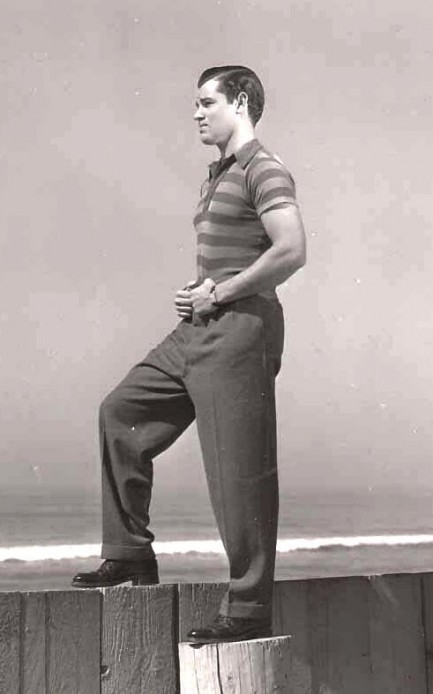 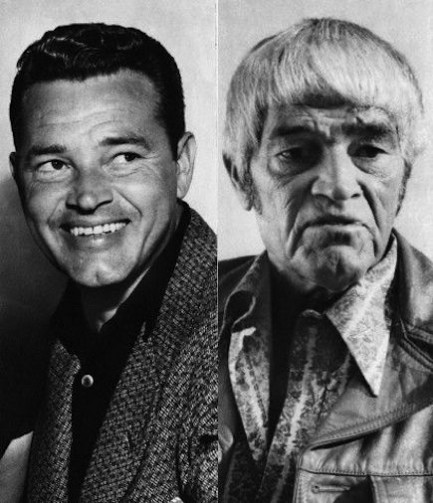
 Any time is the right time for great cover art. 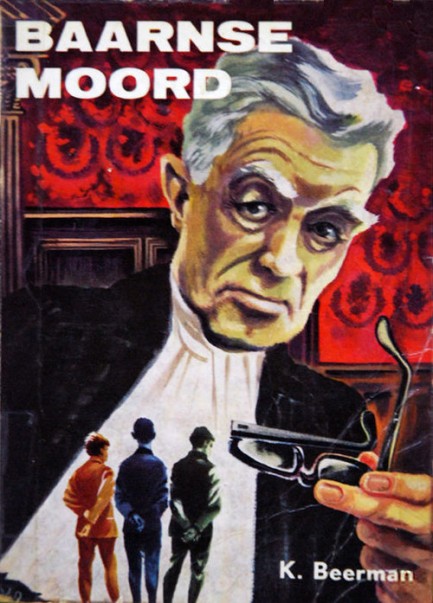
Above, a cover for K. Beerman's Baarnse Moord (Murder in Baarn), painted by Dutch artist Martin Oortwijn. We said we'd get back to Oortwijn and here we are, three years later. He remains, in our eyes at least, a unique talent. We were reminded of him because he illustrated the cover of a Christine Keeler biography, and Keeler is back in the spotlight thanks to the new BBC series The Trial of Christine Keeler, which we've been watching. So far so good on that, and we'll try to dig up more from Oortwijn.
 Bailiff, can you please hand me Exhibit A so I can use it to get these people the hell out of my face? 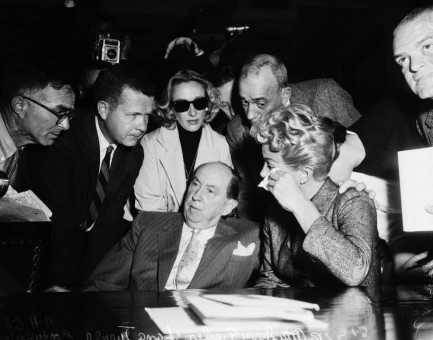
In this photo made today in 1958 Hollywood super attorney Jerry Giesler sits next to Lana Turner at a coroner's inquest into the killing of Turner's boyfriend, alleged mob enforcer Johnny Stompanato. Turner's daughter, fourteen-year-old Cheryl Crane, had stabbed Stompanato in the abdomen with a knife during a confrontation in her and Turner's home. Among the throng seen around Giesler and Turner are Crane's father Stephen, assistant attorney Art Crowley, and various members of the press, who back then were given what today would be considered intrusive access to court proceedings.
As all Hollywood hung on Turner's words, the famed femme fatale, looking every bit the superstar she was, described to the court how an escalating argument between her and Stompanato led to him threatening to kill her. She related the fatal moment this way: “I was walking toward the bedroom door and he was right behind me, and I opened it and my daughter came in. I swear it was so fast I … I truthfully thought she had hit him in the stomach. The best I can remember they came together and they parted. I still never saw a blade.”
In most accounts the knife Crane used is described as a butcher knife, but it was actually a thin-bladed filleting knife. In any case it did the job nicely. And despite taking on a feared thug Crane came away physically unharmed. In the seconds after the stabbing Stompanato either chose not to retaliate, or more likely—because the knife had penetrated his liver, portal vein, and aorta—went into shock immediately and was unable either to strike back or go for aid. Police found him peacefully supine on the bedroom carpet. He had bled very little—at least on the outside.
Giesler got Crane off on the grounds of justifiable homicide, but conspiracy theories about the killing became rampant. Some said Crane killed Stompanato out of jealous desire; others claimed Turner did the deed and got her daughter to take the blame because she knew the court wouldn't imprison a minor. But in 1988 Crane, who never testified in 1958, gave her version of events. She said the attack was exactly as described, but that she also hated Stompanato because he was sexually abusing her. Many didn't believe her in 1988 but her words certainly have the ring of truth today. 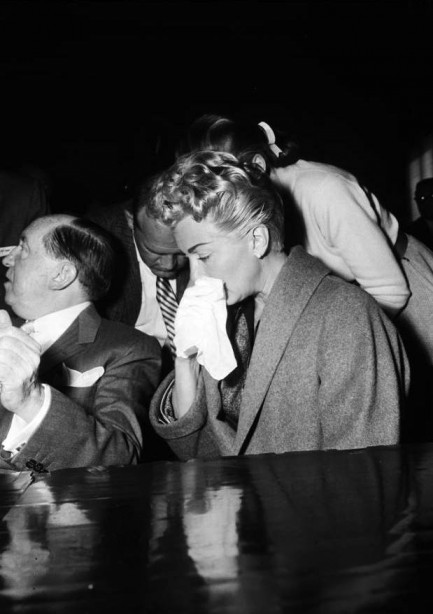 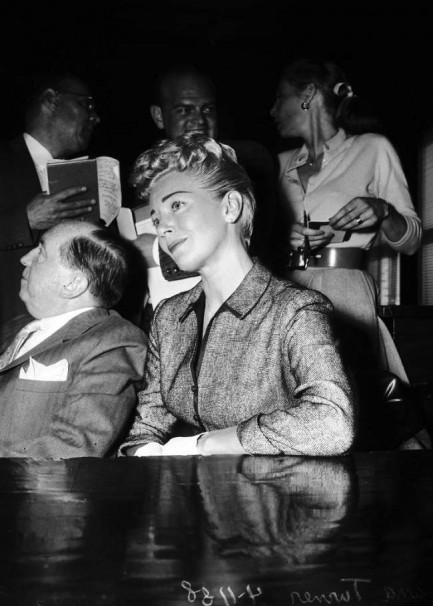 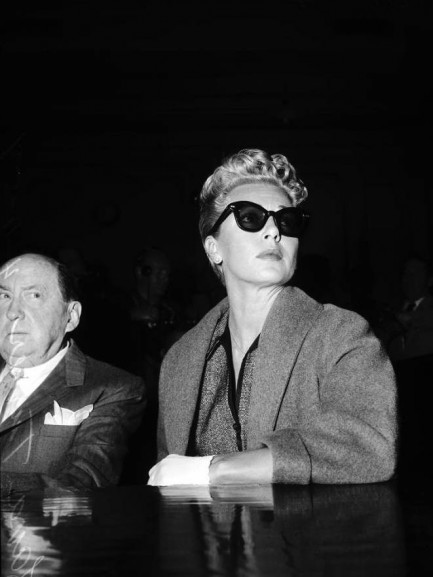
 Did the legal system use him as a pawn, or was it the other way around? 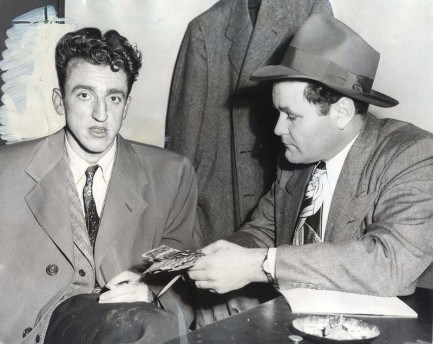
Caryl Chessman and a detective named E.M. Goossen appear in the above photo made shortly after Chessman's arrest in January of 1948. Chessman had robbed several victims in the Los Angeles area, two of whom were women that he sexually assaulted. He forced one woman to perform oral sex on him, and did the same to the other in addition to anally raping her. Chessman was convicted under California's Little Lindbergh Law, named after Charles Lindbergh's infamously kidnapped and murdered son. The law specifically covered intrastate acts of abduction in which victims were physically harmed, two conditions that made the crime a potentially capital offense.
The law was intended to prevent deliberate acts of kidnapping and ransom, as had occurred in the Lindbergh case, but Chessman's prosecutors—demonstrating typical prosecutorial zeal—argued that Chessman had abducted one victim by dragging her approximately twenty-two feet, and had abducted the other woman when he placed her in his car, then drove in pursuit of the victim's boyfriend, who had fled the scene in his own vehicle. Chessman was indeed sentenced to death. The Little Lindbergh Law was revised while he was in prison so that it no longer applied to his crimes, but his execution was not stayed.
During his nearly twelve years on death row he authored four bestselling books—Trial by Ordeal, The Face of Justice, The Kid Was a Killer, and Cell 2455: Death Row, the latter of which was made into a 1955 movie. The books, many interviews, and a steady stream of articles fueled public debate about his looming execution. Among those who appealed for clemency were Aldous Huxley, the Rev. Billy Graham, Ray Bradbury, and Robert Frost. Their interest was not wholly about Chessman so much as it was about the issue of the cruelty of the death penalty, which had already been abandoned in other advanced nations.
In the end the campaigning was ineffective, and Chessman was finally gassed in San Quentin Prison. But even dying, he further catalyzed the death penalty debate. The question of whether a capital punishment is cruel and unusual hinges on whether it causes pain. Gas was held by its proponents to be painless. Chessman had been asked by reporters who would be observing his execution to nod his head if he was in pain. As he was gassed, he nodded his head vigorously and kept at it for several minutes. It took him nine minutes to die. That happened today in 1960. 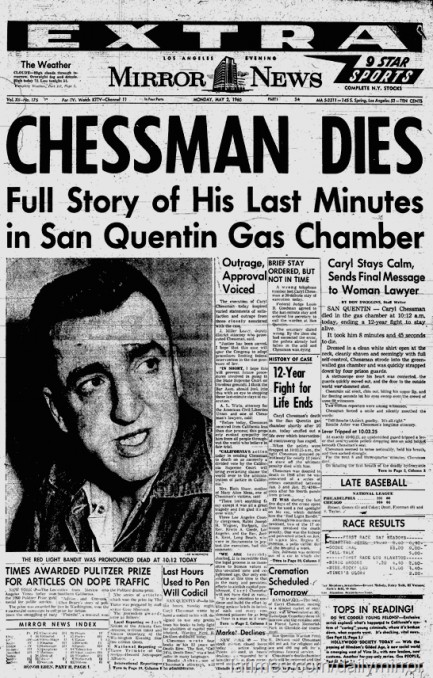
 Did she or didn’t she?  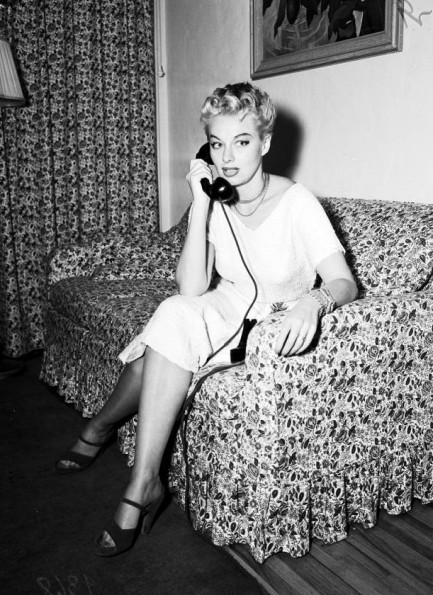
These two photos showing burlesque dancer Lili St. Cyr were shot today in 1951 for a Los Angeles Examiner story about St. Cyr’s legal difficulties. On 23 February of that year she had begun performing at Ciro’s supper club in Hollywood. It was a different type of club for her—it lacked the intimacy of her normal venues, and would sap some of the heat from her act, but the place was world famous and considered by the smart set to be classy. It had hosted Edith Piaf, Marlene Dietrich, Duke Ellington, and Dinah Washington. Of late it was facing stiff competition from Macambo’s, a Brazilian themed joint across the street, and owner Herman Hover wanted to make a splash with St. Cyr. He spent thousands refurbishing the stage just for her, and she would be the first burlesque dancer to transition from men’s clubs to L.A.’s most famous supper club. On premiere night celebs such as Ronald Reagan, Nancy Davis, Franchot Tone, Barbara Payton, Lex Barker, Mickey Rooney, and Los Angeles mayor Fletcher Bowron watched her strip down to toned perfection as they ate dinner and sipped drinks. Other celebs that visited that summer included Bette Davis, Humphrey Bogart, and Clark Gable. During St. Cyr’s residency she varied her act, but a standard bit was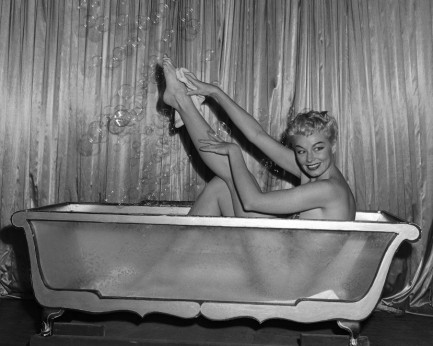 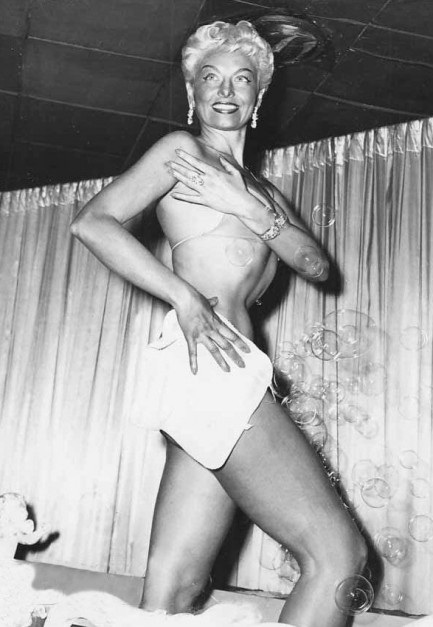 entitled "An Interlude Before Evening," and involved being helped from her clothing by her maid Sadie before slipping nude into a bathtub. But the nudity was an illusion, the cleverest part of her act, achieved through a combination of lighting, positioning, flesh-colored underwear, and sheer athleticism as she slipped quickly from behind a towel and into the sudsy tub. entitled "An Interlude Before Evening," and involved being helped from her clothing by her maid Sadie before slipping nude into a bathtub. But the nudity was an illusion, the cleverest part of her act, achieved through a combination of lighting, positioning, flesh-colored underwear, and sheer athleticism as she slipped quickly from behind a towel and into the sudsy tub. On 18 October a group of Los Angeles sheriff’s deputies, who were trying to enforce a countywide ban against stripping, arrested St. Cyr and Herman Hover. The charges were the usual slate. St. Cyr called upon celebrity lawyer Jerry Giesler—an event the two Examiner photos at top are supposed to be illustrating—and Giesler proceeded to help turn what was already a media boon for St. Cyr into a full bonanza. Giesler was a showman, and he loved cases that had the potential to increase his fame. He made assorted sensational statements to the press, including one in which he promised to have his client perform her bath routine in the courtroom, and another in which he opined that putting together a jury of peers required empaneling a dozen strippers. He described St. Cyr as merely trying to improve her station in life, just an industrious woman trying to carve herself a piece of American pie. The press ate it up. 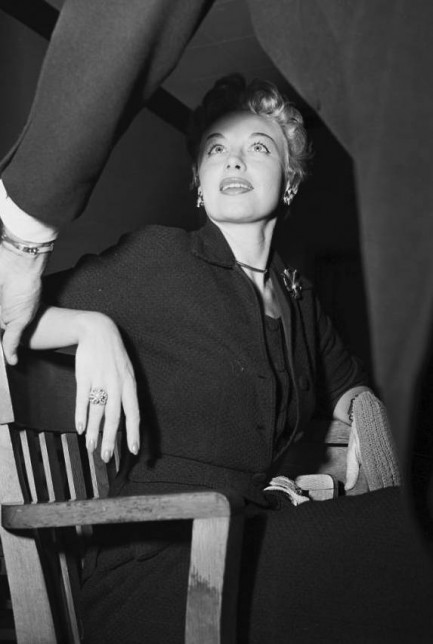 The trial was scheduled for early December in the Beverly Hills Courthouse. Giesler kept the jury—which wasn’t all strippers, but at least was mostly female—laughing with his continual antics. He introduced St. Cyr’s rhinestone encrusted bra and g-string as people’s exhibits A and B. He drew diagrams on a blackboard illustrating how different observers' vantage points toward the stage were blocked by St. Cyr's maid. He flustered police officials by making them discuss in detail such such terms as “bump,” “grind,” and “half-bump,” and followed that up by putting Herman Hover on the witness stand and having him demonstrate those moves. The sight of the portly Hover attempting burlesque sent ripples of laughter through the courtroom. Years later Giesler wrote: “I can honestly say I succeeded in having her case laughed into a not-guilty verdict.” The trial was scheduled for early December in the Beverly Hills Courthouse. Giesler kept the jury—which wasn’t all strippers, but at least was mostly female—laughing with his continual antics. He introduced St. Cyr’s rhinestone encrusted bra and g-string as people’s exhibits A and B. He drew diagrams on a blackboard illustrating how different observers' vantage points toward the stage were blocked by St. Cyr's maid. He flustered police officials by making them discuss in detail such such terms as “bump,” “grind,” and “half-bump,” and followed that up by putting Herman Hover on the witness stand and having him demonstrate those moves. The sight of the portly Hover attempting burlesque sent ripples of laughter through the courtroom. Years later Giesler wrote: “I can honestly say I succeeded in having her case laughed into a not-guilty verdict.” That may have been true, but St Cyr’s icy demeanor was also an important factor. The women found her elegant and remote—the opposite of what they had expected. And the cops did their part for St. Cyr's defense by being terrible witnesses. One claimed that she emerged from the tub completely nude (the normal conclusion to her Interlude, and just as illusory). Another said she wore undies but that he could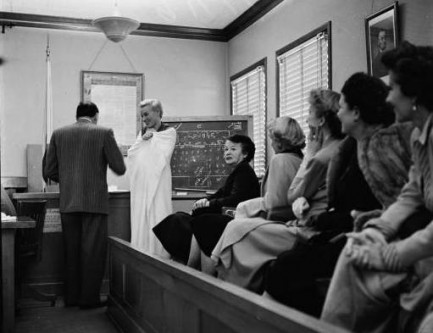 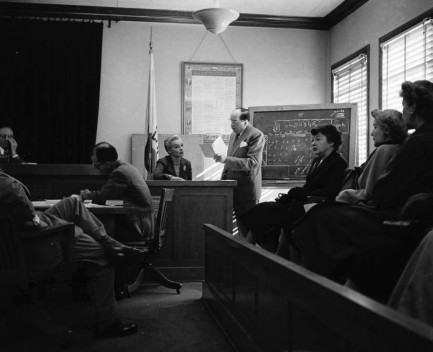 see the outline of her “private parts,” which he discerned in enough detail to determine “were shaven.” The inconsistencies were epic. Some said she caressed herself, others weren’t sure. Another described her towel as “about twenty, twenty-four inches.” In reality it was three times that size. It was as if St. Cyr's dance had dumbfounded the cops. see the outline of her “private parts,” which he discerned in enough detail to determine “were shaven.” The inconsistencies were epic. Some said she caressed herself, others weren’t sure. Another described her towel as “about twenty, twenty-four inches.” In reality it was three times that size. It was as if St. Cyr's dance had dumbfounded the cops. The confusion has extended even to the present day. For a performance that lasted barely fifteen minutes, it has had an amazing amount of conflicting information attached to it. Columnist Army Archerd claimed St. Cyr was indeed nude that night (clearly wrong, according to multiple testimonies); Sheila Weller’s book Dancing at Ciro’s claims an “all-male” jury (it was mostly female) was taken to Ciro’s to see the act (Giesler tried, but the judge said no); some sources claim St. Cyr performed a reverse strip, beginning nude in the tub and emerging to be slowly dressed by her maid (indeed, that was an oft-performed variation, so it is certainly possible it happened that night). Who's right, and who's wrong? Short of using a time machine to return to October 1951 there's no way to tell. At the end of the six-day trial the jury acquitted St. Cyr following a mere seventy-eight minutes of deliberations. There had been no indecent exposure. At least not that night. All St. Cyr’s biographers agree on this much—she was shy and regal offstage, but her performances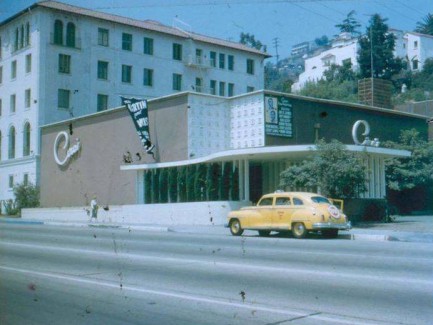 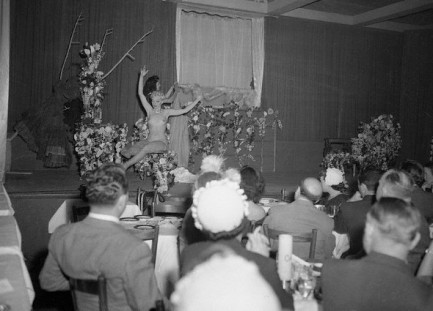 freed her to inhabit different characters. Despite her assertions that she always wore at least a g-string and bra, she definitely performed topless on occasion, as shown by the above photo taken at Ciro’s during early 1951. freed her to inhabit different characters. Despite her assertions that she always wore at least a g-string and bra, she definitely performed topless on occasion, as shown by the above photo taken at Ciro’s during early 1951. Sheriff’s deputies had gone to the club already intent upon arresting her based on what they had heard about the act, which may have influenced their testimony—i.e., they didn’t see her nude, but knew she had done it before. St. Cyr admitted in court she knew police were in the audience, thus she was especially careful that night. But what of other nights? Maybe Army Archerd did what columnists do—took an event he witnessed on one night and pretended it happened on a more useful one. Maybe St. Cyr, on occasions when she knew the cops were far away, flashed her audience to generate buzz. It’s likely we’ll never know what really happened, but that merely adds to the St. Cyr mystique. Did she or didn’t she? Only her maid knew for sure.
 These two things are called eyes, and if you don’t want to be offended you can do something incredible—close them. 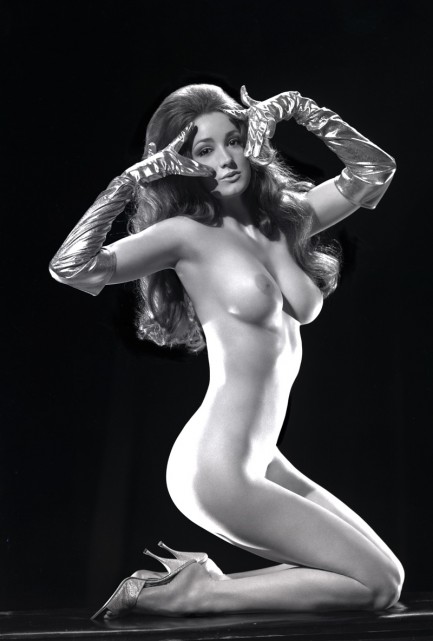
Studio nudes of Susanne Haines have been floating around the web for a while now, and they made us curious who she is. No info was readily available, but after some digging it turns out this obscure dancer has a very interesting story. She born and raised around Sacramento, California, and spent some time in Utah, before winning the Miss Placer County beauty contest in 1963 when she was sixteen. Several years later, as an unhappily married college student, she saw an ad asking for a go-go waitress and took the job to get away from her husband. She was soon earning $72.50 a week serving drinks in a nightclub. From there it was a short leap to the stage—and a bump in earnings to $450 a week as she peeled for male customers. In May 1969 she was performing at the Pink Pussy Kat in the Sacramento suburb of Orangevale when two sheriff’s deputies entered and found Haines and two other women serving drinks topless. When Haines took the stage and performed a dance number that ended with her completely naked, the cops arrested her along with fellow dancer Sheila Brendenson for indecent exposure and lewd and dissolute conduct. Club owner Leonard Glancy was arrested for soliciting. 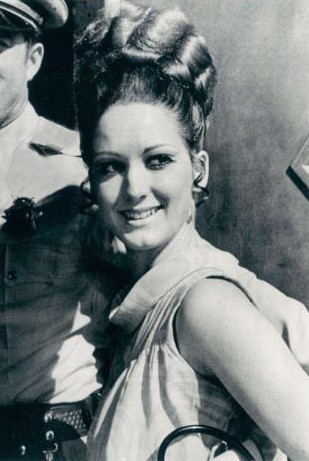 That case didn’t reach court until late summer, when it landed before the bench of Judge Earl Warren, Jr., son of Supreme Court Chief Justice Earl Warren, who had just retired in June. Glancy had kept the Pink Pussy Kat open by featuring only bikini dancing, and he also cooked up an ingenious scheme of having patrons pay to watch nude dances on closed circuit television, as in the photo just below, since it was only “live” nudity that was legally dangerous. That case didn’t reach court until late summer, when it landed before the bench of Judge Earl Warren, Jr., son of Supreme Court Chief Justice Earl Warren, who had just retired in June. Glancy had kept the Pink Pussy Kat open by featuring only bikini dancing, and he also cooked up an ingenious scheme of having patrons pay to watch nude dances on closed circuit television, as in the photo just below, since it was only “live” nudity that was legally dangerous. Early in the trial, Judge Warren Jr. agreed with defense attorney Ronald Sypnicki and D.A. Kenneth Hake that, since there was no film or photos of the offending performance, the only fair thing was to allow the jurors to see it for themselves. That couldn’t happen in the courthouse, so Warren had the jury conducted to the Pink Pussy Kat, where Haines performed nude under psychedelic illumination to songs such as “Israelites” and Jimi Hendrix’s hip shaker “Foxy Lady.” Because the bar was open to regular patrons in an attempt to recreate the normal atmosphere of a nude performance, Haines received raucous applause after each of her numbers.
Asked for comment by reporters afterward, Warren deemed his decision a sound one, saying, “[They] got a better look than we could have given them with just plain oral testimony or by trying to re-create some of these things in the courtroom.” Five days later Warren proved his faith in x-rated field trips by taking another panel to another nudie club during a trial involving stripper Carol Doda. The Haines case lasted for five weeks total.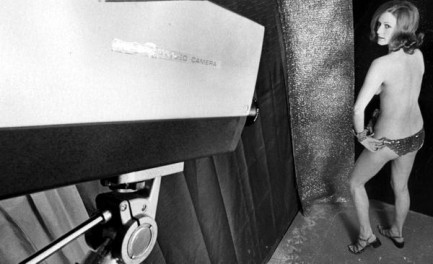 The jury was finally sent to their chambers the second day of October, and after ten hours of deliberation returned with a verdict of guilty on the indecent exposure charge, but innocent on lewd conduct. Warren explained that it had to be guilty on both or innocent on both—if the exposure was indecent the conduct was obviously lewd, or conversely neither was true—and the jury was sent back into their chambers. After another hour of deliberation, Haines and Brendenson won acquittals, as did club owner Glancy on his soliciting charge. The jury was finally sent to their chambers the second day of October, and after ten hours of deliberation returned with a verdict of guilty on the indecent exposure charge, but innocent on lewd conduct. Warren explained that it had to be guilty on both or innocent on both—if the exposure was indecent the conduct was obviously lewd, or conversely neither was true—and the jury was sent back into their chambers. After another hour of deliberation, Haines and Brendenson won acquittals, as did club owner Glancy on his soliciting charge. Brendenson quit dancing after the trial, but Haines was ready to get naked again, and Glancy was more than willing to provide a stage. The county sheriff had said he’d continue to jail dancers despite the jury’s verdict, and Haines racked up seven arrests at the Pink Pussy Kat—plus about fifteen others at various venues over the years. But she also was nationally known thanks to the trial 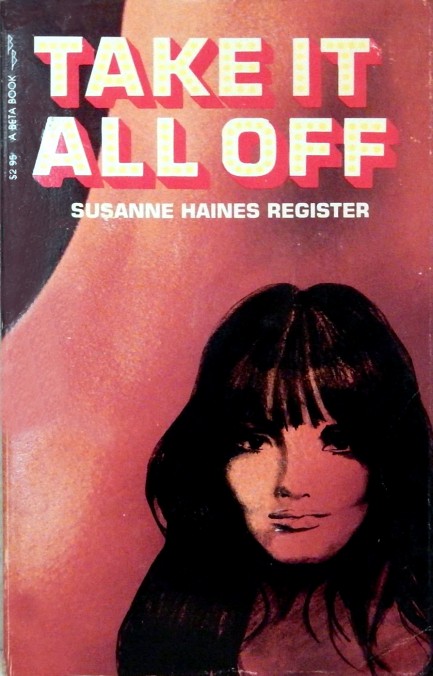 and won the title of Miss Nude Universe in 1972, which in turn pushed her earnings as high as $1,000—about $5,700 in today’s money. Fame didn’t deter the morals squads, though. She was arrested for indecent exposure in Oklahoma and this time lost a $5,000 judgment. Later she was arrested for larceny. and won the title of Miss Nude Universe in 1972, which in turn pushed her earnings as high as $1,000—about $5,700 in today’s money. Fame didn’t deter the morals squads, though. She was arrested for indecent exposure in Oklahoma and this time lost a $5,000 judgment. Later she was arrested for larceny. Not long after, realizing her life was going in a direction she couldn’t control, she quit show business and became an evangelical Christian. In 1978, under her married name Susanne Haines Register, she wrote an autobiography, a cautionary tale of life in the fast lane entitled—what else?—Take It All Off. She does just that in the four shots below. They were made, like the one at top, around 1969.
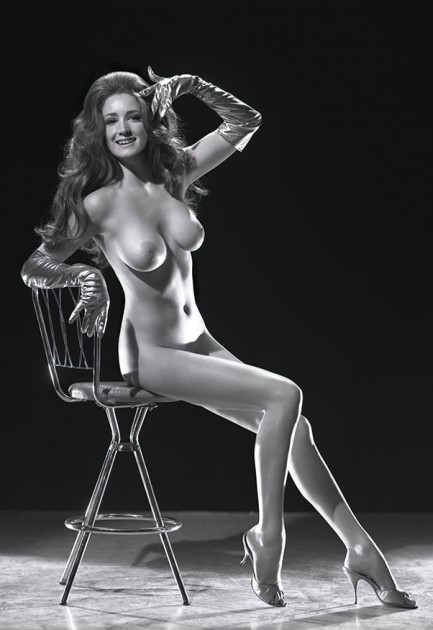 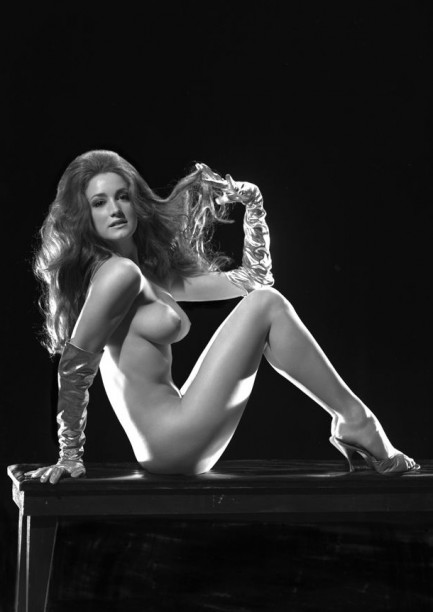 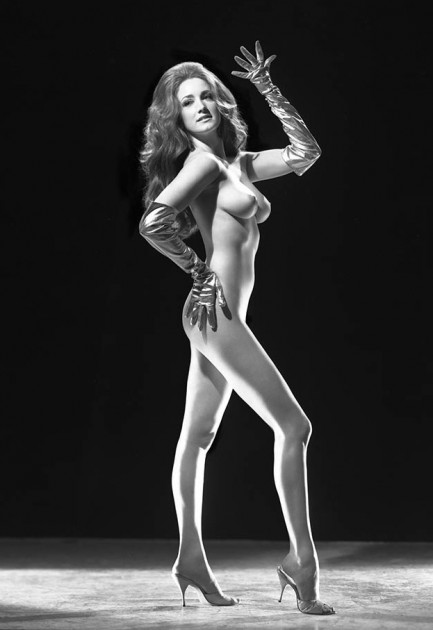 
 Liberace experiences tabloid wrath at its most merciless. 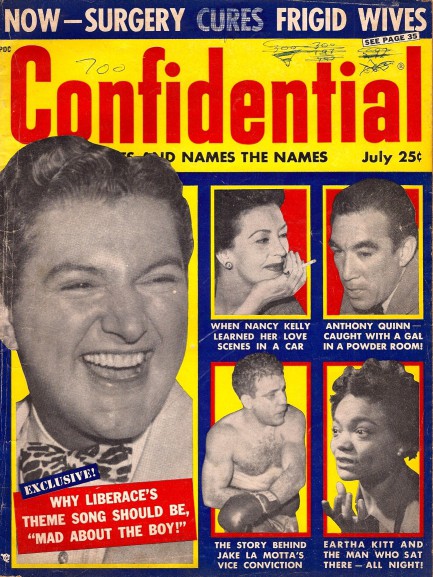
It was in this July 1957 issue of Confidential that journalist “Horton Streete’ infamously outed cover star Liberace in the most vicious and dehumanizing way with an article entitled “Why Liberace’s Theme Song Should Be ‘Mad About the Boy’.” We’ve talked about it before. Streete willfully attempted to damage the singer’s career by spinning a shocking tale of how he attacked a young, male press agent. The article refers to Liberace as Fatso, Pudgy, Dimples, and other, less flattering monikers. Here’s a rule you can count on—when a journalist or on-air personality constantly refers to someone by other than his or her name or title, it’s a hit piece. Liberace was horrified and sued Confidential. California Attorney General Pat Brown had already managed to win an indictment of the magazine two months earlier. Owner Robert Harrison was about to spend his entire summer in court. He took these legal threats to heart and publicly promised to stop publishing stories about the private lives of Hollywood stars. Up until then Confidential had been as reckless as a magazine could be. This issue accuses Gary Crosby of punching a woman in the face, and Eartha Kitt of trapping her friend’s boyfriend in her penthouse. An extraordinary story about boxer Jake LaMotta suggests the he got a bum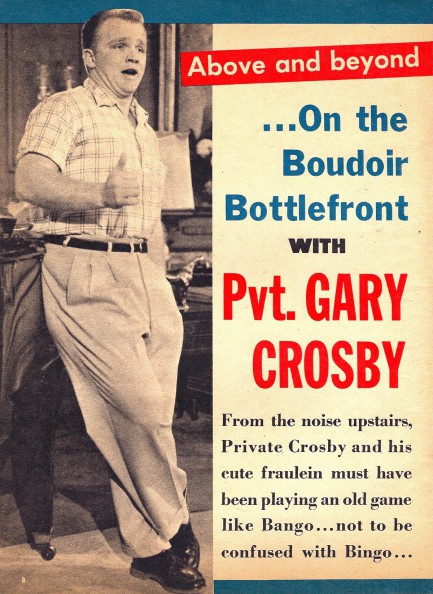 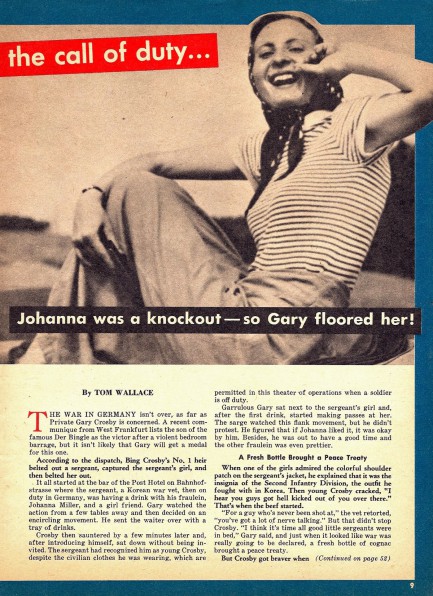 rap in his morals trial. LaMotta was serving time for bedding a 14-year-old. Prosecutors had convinced a jury that the incident with LaMotta was a primary cause of the girl later becoming a prostitute. Confidential rides to the rescue, claiming that the girl’s father had already deflowered her, therefore LaMotta could not have had any influence on the girl’s fate. How’s that for a principled stand? rap in his morals trial. LaMotta was serving time for bedding a 14-year-old. Prosecutors had convinced a jury that the incident with LaMotta was a primary cause of the girl later becoming a prostitute. Confidential rides to the rescue, claiming that the girl’s father had already deflowered her, therefore LaMotta could not have had any influence on the girl’s fate. How’s that for a principled stand? These early issues of Confidential are a cesspool of journalistic ethics, no doubt, but they’re also a visual treat. Using black, red, blue, and yellow, plus the white of the pages themselves, the designers put together a bold and gaudy package that would influence every other tabloid on the market. The layouts on Kitt, Liberace, Alan Dale, and Lex Barker are among the most eye-catching we’ve seen from the period. Elsewhere you get Anthony Quinn, and a host of other stars. We have a bunch of scans below. Remember, you can always see more from Confidential and other tabs by visiting our tabloid index at this link.
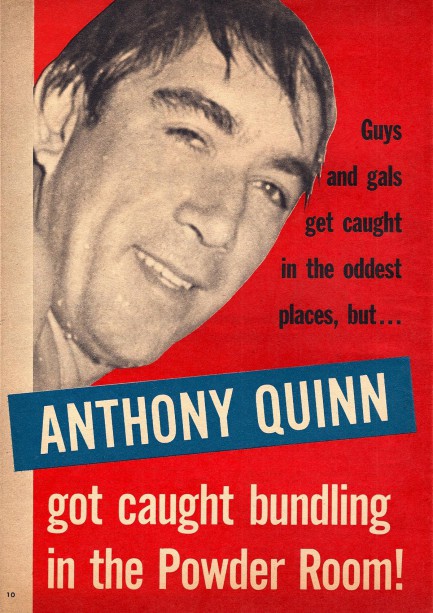 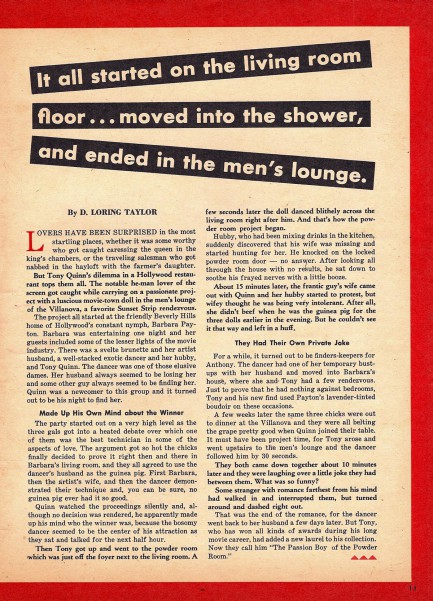 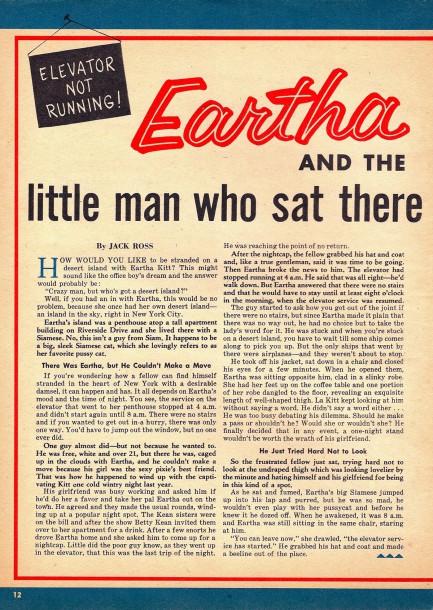 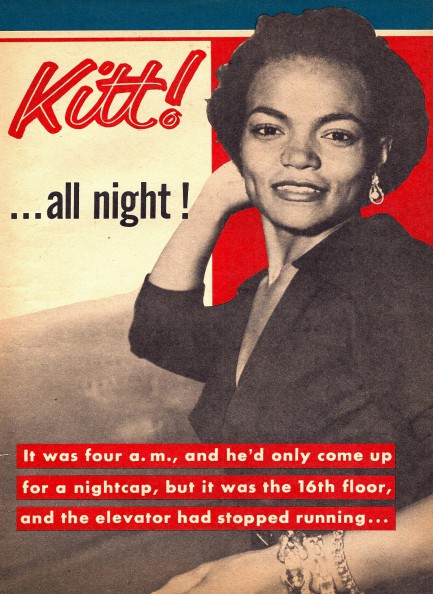 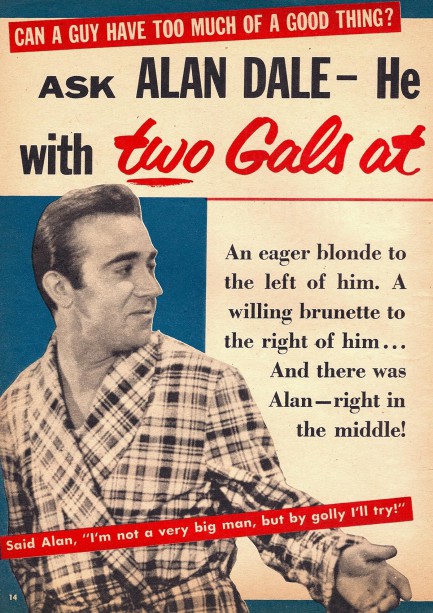 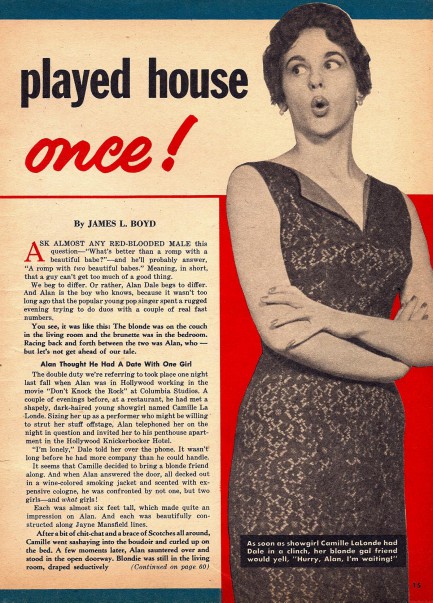 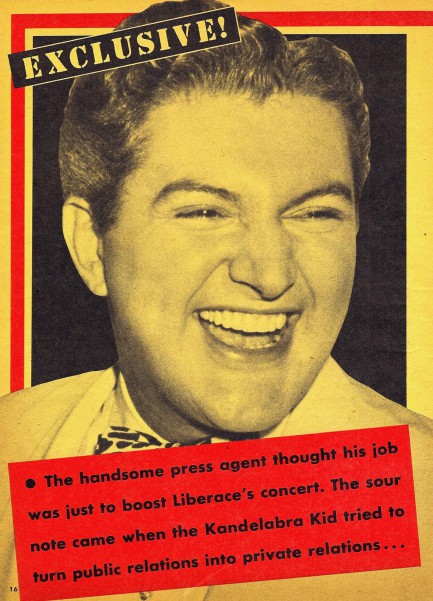 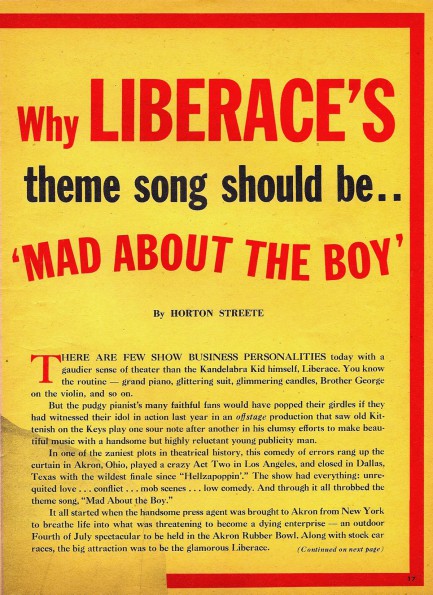 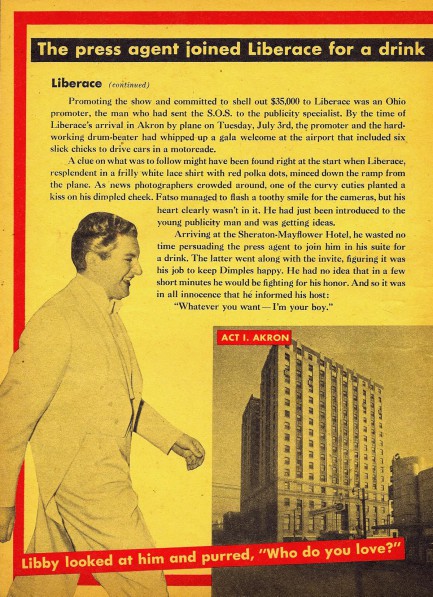 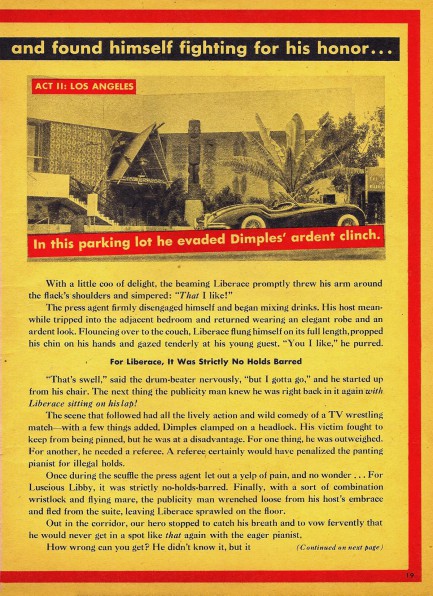 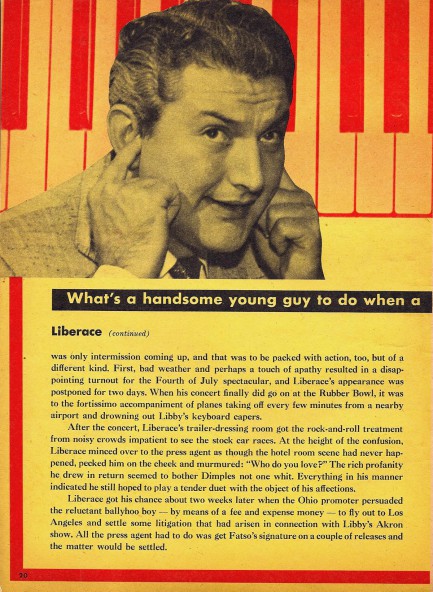 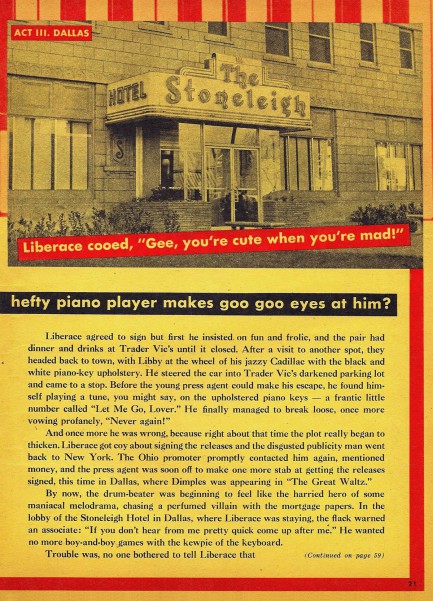 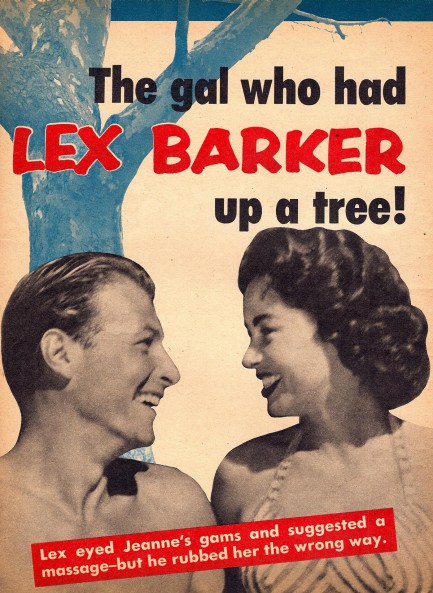 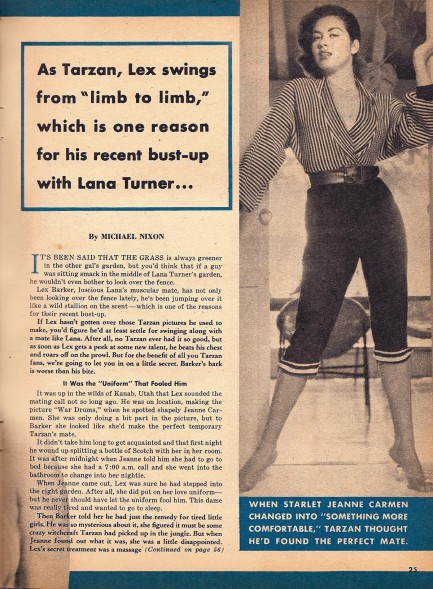 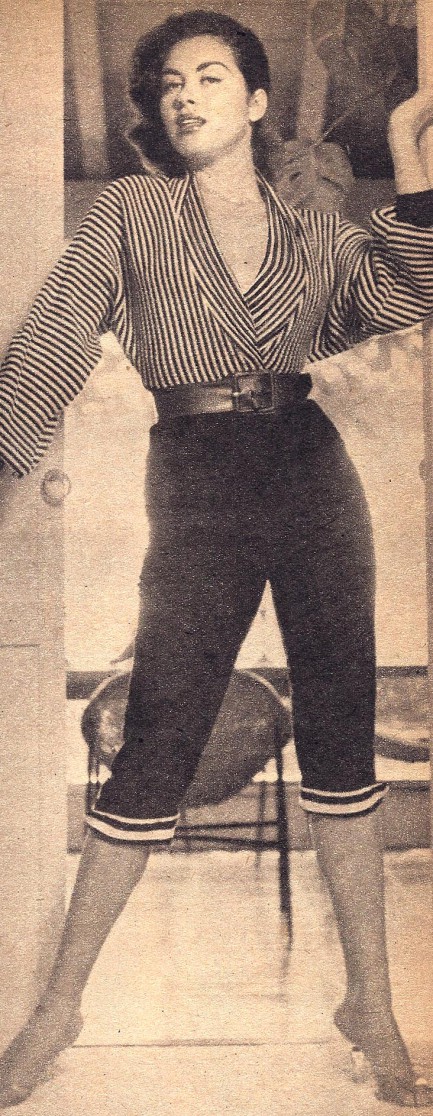 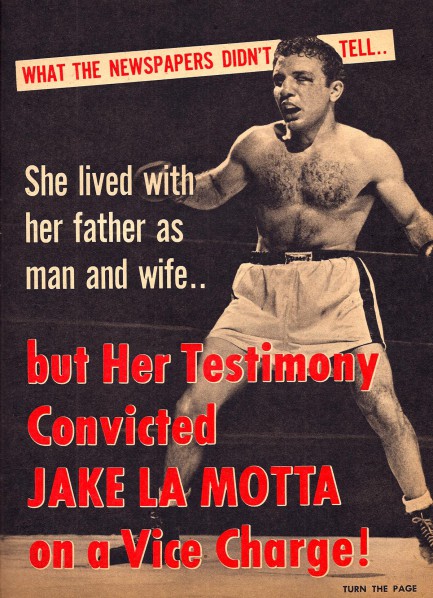 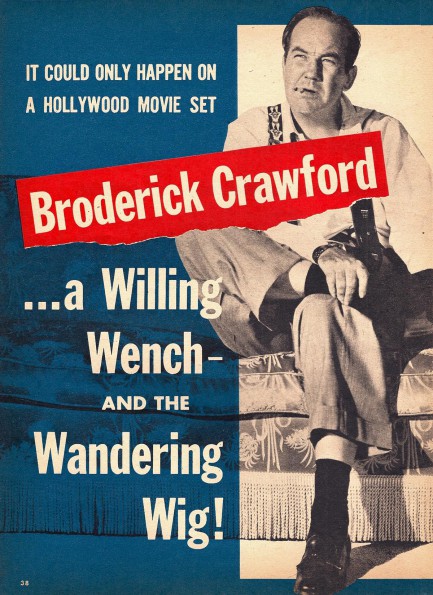 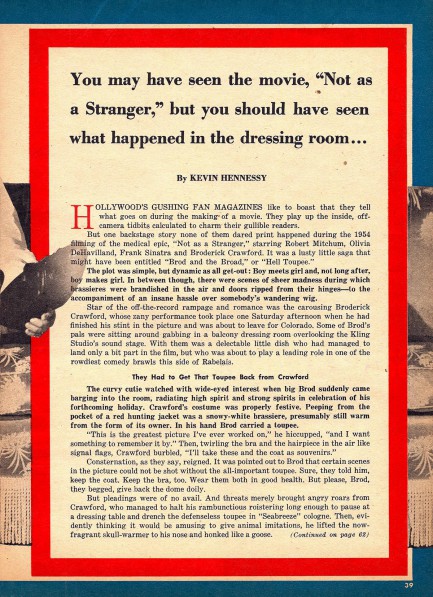 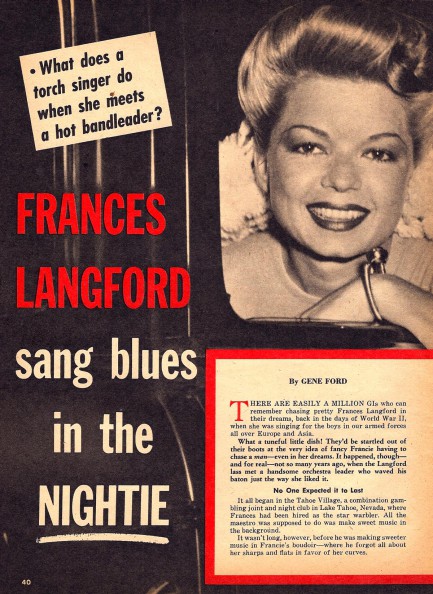 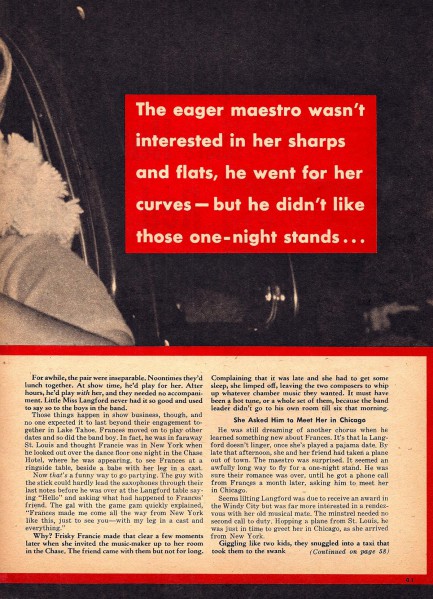

|
 |

The headlines that mattered yesteryear.
2003—Hope Dies
Film legend Bob Hope dies of pneumonia two months after celebrating his 100th birthday. 1945—Churchill Given the Sack
In spite of admiring Winston Churchill as a great wartime leader, Britons elect
Clement Attlee the nation's new prime minister in a sweeping victory for the Labour Party over the Conservatives. 1952—Evita Peron Dies
Eva Duarte de Peron, aka Evita, wife of the president of the Argentine Republic, dies from cancer at age 33. Evita had brought the working classes into a position of political power never witnessed before, but was hated by the nation's powerful military class. She is lain to rest in Milan, Italy in a secret grave under a nun's name, but is eventually returned to Argentina for reburial beside her husband in 1974. 1943—Mussolini Calls It Quits
Italian dictator Benito Mussolini steps down as head of the armed forces and the government. It soon becomes clear that Il Duce did not relinquish power voluntarily, but was forced to resign after former Fascist colleagues turned against him. He is later installed by Germany as leader of the Italian Social Republic in the north of the country, but is killed by partisans in 1945.
|

|
|

It's easy. We have an uploader that makes it a snap. Use it to submit your art, text, header, and subhead. Your post can be funny, serious, or anything in between, as long as it's vintage pulp. You'll get a byline and experience the fleeting pride of free authorship. We'll edit your post for typos, but the rest is up to you. Click here to give us your best shot.

|
|




 carrying on the way they've been. The public is so enraged now, any would-be rapist knows he stands a chance of being torn limb from limb if he's caught.” But the problem persists all these years later, even despite a ramping up of penalties for the crime.
carrying on the way they've been. The public is so enraged now, any would-be rapist knows he stands a chance of being torn limb from limb if he's caught.” But the problem persists all these years later, even despite a ramping up of penalties for the crime.


 Show business careers go off the rails for a wide array of reasons—lack of talent, lack of audience appeal, substance abuse, and a predilection for general mayhem all come to mind. Hollywood actor Tom Neal fits legendarily into the last category. From his debut in 1938 through 1951 he logged more than seventy film appearances. That's incredible output by any measure. Most of his roles were in b-movies, but there were some notable parts mixed in. His career highlights included Another Thin Man, the film noir Detour, and Crime, Inc.
Show business careers go off the rails for a wide array of reasons—lack of talent, lack of audience appeal, substance abuse, and a predilection for general mayhem all come to mind. Hollywood actor Tom Neal fits legendarily into the last category. From his debut in 1938 through 1951 he logged more than seventy film appearances. That's incredible output by any measure. Most of his roles were in b-movies, but there were some notable parts mixed in. His career highlights included Another Thin Man, the film noir Detour, and Crime, Inc. record in the ring. Maybe Tone slipped on a dollop of Beluga caviar. Payton said Tone simply had no choice about fighting because Neal attacked him. Whatever the reason, Neal floored Tone with his first punch, and continued to beat him afterward, delivering cheek and nose fractures. Tone lay in an eighteen hour coma in the hospital. Ironically, that was the day Payton's divorce had come through.
record in the ring. Maybe Tone slipped on a dollop of Beluga caviar. Payton said Tone simply had no choice about fighting because Neal attacked him. Whatever the reason, Neal floored Tone with his first punch, and continued to beat him afterward, delivering cheek and nose fractures. Tone lay in an eighteen hour coma in the hospital. Ironically, that was the day Payton's divorce had come through.
 soon discovered that Payton—wait for it—had never stopped seeing Neal, including while Tone was in the hospital with a broken face. So there went that marriage. It seemed as if Neal had unequivocally won Payton's affections after all, and she does look happy in the 1952 photo above, but it's probably no surprise to learn that the two parted ways after a few tumultuous years, some broken windows, and at least one police intervention. Payton went on to have truly epic problems that would put a South American novela to shame.
soon discovered that Payton—wait for it—had never stopped seeing Neal, including while Tone was in the hospital with a broken face. So there went that marriage. It seemed as if Neal had unequivocally won Payton's affections after all, and she does look happy in the 1952 photo above, but it's probably no surprise to learn that the two parted ways after a few tumultuous years, some broken windows, and at least one police intervention. Payton went on to have truly epic problems that would put a South American novela to shame.
 slug entering her skull behind her right ear and ending up in a sofa cushion. Neal wasn't on the premises when police arrived, but was soon arrested, and claimed the shooting had been an accident, the result of a struggle over the gun after his wife pulled it on him.
slug entering her skull behind her right ear and ending up in a sofa cushion. Neal wasn't on the premises when police arrived, but was soon arrested, and claimed the shooting had been an accident, the result of a struggle over the gun after his wife pulled it on him.















 entitled "An Interlude Before Evening," and involved being helped from her clothing by her maid Sadie before slipping nude into a bathtub. But the nudity was an illusion, the cleverest part of her act, achieved through a combination of lighting, positioning, flesh-colored underwear, and sheer athleticism as she slipped quickly from behind a towel and into the sudsy tub.
entitled "An Interlude Before Evening," and involved being helped from her clothing by her maid Sadie before slipping nude into a bathtub. But the nudity was an illusion, the cleverest part of her act, achieved through a combination of lighting, positioning, flesh-colored underwear, and sheer athleticism as she slipped quickly from behind a towel and into the sudsy tub. The trial was scheduled for early December in the Beverly Hills Courthouse. Giesler kept the jury—which wasn’t all strippers, but at least was mostly female—laughing with his continual antics. He introduced St. Cyr’s rhinestone encrusted bra and g-string as people’s exhibits A and B. He drew diagrams on a blackboard illustrating how different observers' vantage points toward the stage were blocked by St. Cyr's maid. He flustered police officials by making them discuss in detail such such terms as “bump,” “grind,” and “half-bump,” and followed that up by putting Herman Hover on the witness stand and having him demonstrate those moves. The sight of the portly Hover attempting burlesque sent ripples of laughter through the courtroom. Years later Giesler wrote: “I can honestly say I succeeded in having her case laughed into a not-guilty verdict.”
The trial was scheduled for early December in the Beverly Hills Courthouse. Giesler kept the jury—which wasn’t all strippers, but at least was mostly female—laughing with his continual antics. He introduced St. Cyr’s rhinestone encrusted bra and g-string as people’s exhibits A and B. He drew diagrams on a blackboard illustrating how different observers' vantage points toward the stage were blocked by St. Cyr's maid. He flustered police officials by making them discuss in detail such such terms as “bump,” “grind,” and “half-bump,” and followed that up by putting Herman Hover on the witness stand and having him demonstrate those moves. The sight of the portly Hover attempting burlesque sent ripples of laughter through the courtroom. Years later Giesler wrote: “I can honestly say I succeeded in having her case laughed into a not-guilty verdict.” 
 see the outline of her “private parts,” which he discerned in enough detail to determine “were shaven.” The inconsistencies were epic. Some said she caressed herself, others weren’t sure. Another described her towel as “about twenty, twenty-four inches.” In reality it was three times that size. It was as if St. Cyr's dance had dumbfounded the cops.
see the outline of her “private parts,” which he discerned in enough detail to determine “were shaven.” The inconsistencies were epic. Some said she caressed herself, others weren’t sure. Another described her towel as “about twenty, twenty-four inches.” In reality it was three times that size. It was as if St. Cyr's dance had dumbfounded the cops.
 freed her to inhabit different characters. Despite her assertions that she always wore at least a g-string and bra, she definitely performed topless on occasion, as shown by the above photo taken at Ciro’s during early 1951.
freed her to inhabit different characters. Despite her assertions that she always wore at least a g-string and bra, she definitely performed topless on occasion, as shown by the above photo taken at Ciro’s during early 1951.

 That case didn’t reach court until late summer, when it landed before the bench of Judge Earl Warren, Jr., son of Supreme Court Chief Justice Earl Warren, who had just retired in June. Glancy had kept the Pink Pussy Kat open by featuring only bikini dancing, and he also cooked up an ingenious scheme of having patrons pay to watch nude dances on closed circuit television, as in the photo just below, since it was only “live” nudity that was legally dangerous.
That case didn’t reach court until late summer, when it landed before the bench of Judge Earl Warren, Jr., son of Supreme Court Chief Justice Earl Warren, who had just retired in June. Glancy had kept the Pink Pussy Kat open by featuring only bikini dancing, and he also cooked up an ingenious scheme of having patrons pay to watch nude dances on closed circuit television, as in the photo just below, since it was only “live” nudity that was legally dangerous. The jury was finally sent to their chambers the second day of October, and after ten hours of deliberation returned with a verdict of guilty on the indecent exposure charge, but innocent on lewd conduct. Warren explained that it had to be guilty on both or innocent on both—if the exposure was indecent the conduct was obviously lewd, or conversely neither was true—and the jury was sent back into their chambers. After another hour of deliberation, Haines and Brendenson won acquittals, as did club owner Glancy on his soliciting charge.
The jury was finally sent to their chambers the second day of October, and after ten hours of deliberation returned with a verdict of guilty on the indecent exposure charge, but innocent on lewd conduct. Warren explained that it had to be guilty on both or innocent on both—if the exposure was indecent the conduct was obviously lewd, or conversely neither was true—and the jury was sent back into their chambers. After another hour of deliberation, Haines and Brendenson won acquittals, as did club owner Glancy on his soliciting charge. and won the title of Miss Nude Universe in 1972, which in turn pushed her earnings as high as $1,000—about $5,700 in today’s money. Fame didn’t deter the morals squads, though. She was arrested for indecent exposure in Oklahoma and this time lost a $5,000 judgment. Later she was arrested for larceny.
and won the title of Miss Nude Universe in 1972, which in turn pushed her earnings as high as $1,000—about $5,700 in today’s money. Fame didn’t deter the morals squads, though. She was arrested for indecent exposure in Oklahoma and this time lost a $5,000 judgment. Later she was arrested for larceny.






 rap in his morals trial. LaMotta was serving time for bedding a 14-year-old. Prosecutors had convinced a jury that the incident with LaMotta was a primary cause of the girl later becoming a prostitute. Confidential rides to the rescue, claiming that the girl’s father had already deflowered her, therefore LaMotta could not have had any influence on the girl’s fate. How’s that for a principled stand?
rap in his morals trial. LaMotta was serving time for bedding a 14-year-old. Prosecutors had convinced a jury that the incident with LaMotta was a primary cause of the girl later becoming a prostitute. Confidential rides to the rescue, claiming that the girl’s father had already deflowered her, therefore LaMotta could not have had any influence on the girl’s fate. How’s that for a principled stand?
























































































